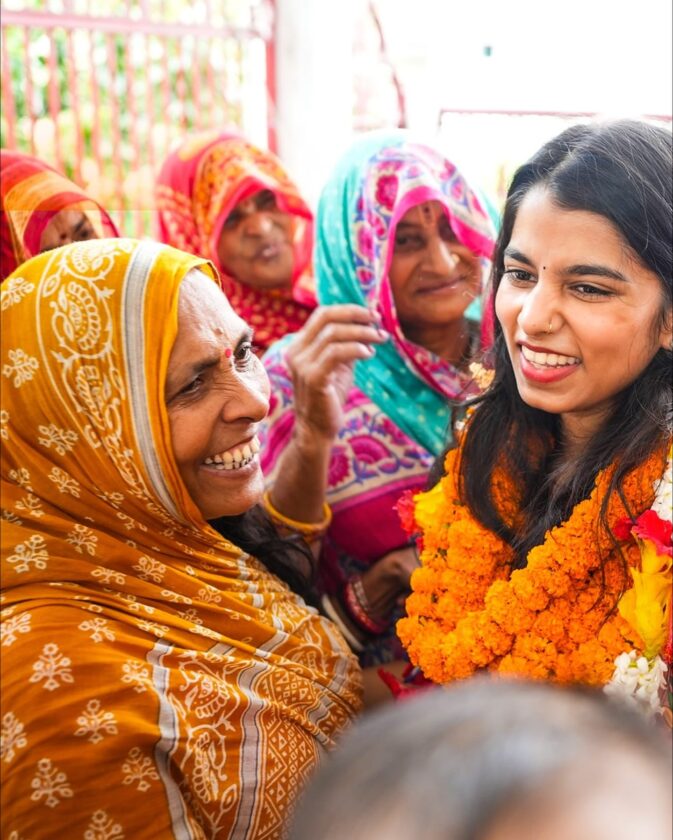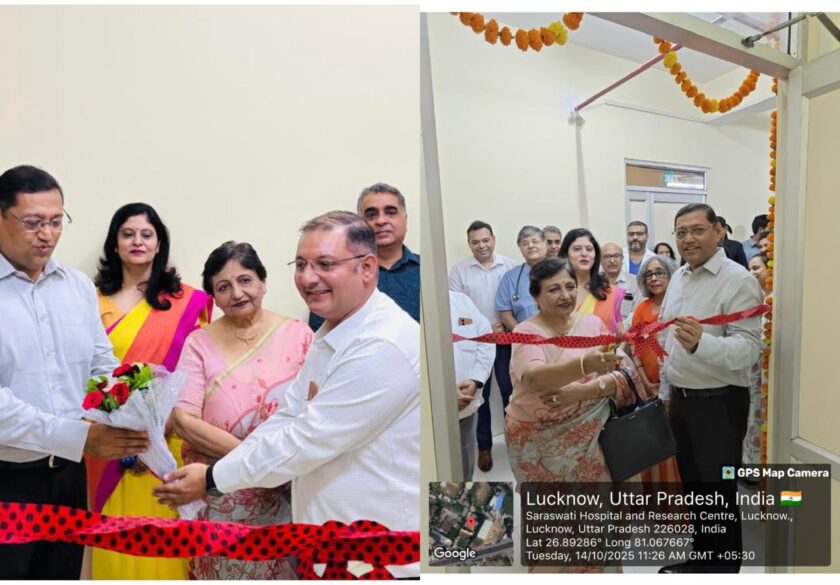Lucknow: Every year the world observes World Hypertension Day to raise awareness about high blood pressure—a condition that continues to grow quietly yet rapidly across all age groups, particularly in developing countries like India. Often referred to as the “silent killer,” hypertension usually manifests without clear warning signs until it causes significant harm to vital organs such as the heart, brain, kidneys, and eyes. In India, it is estimated that more than one in four adults suffers from high blood pressure, with many remaining undiagnosed for years. This makes the issue even more alarming, as untreated hypertension can lead to life-threatening complications like heart attacks and strokes, which are among the top causes of premature death worldwide.
Hypertension does not emerge overnight. It is the result of a combination of genetic predisposition and lifestyle-related choices that accumulate over time. Major contributing factors include a poor diet, physical inactivity, obesity, chronic stress, sleep deprivation, smoking, and excessive alcohol consumption. Among these, unhealthy dietary practices and sedentary lifestyles are perhaps the most widespread and modifiable causes. With rising urbanization, long working hours, and easy access to packaged and fast foods, people are drifting away from traditional, home-cooked, balanced meals to quick-fix solutions that are high in salt, sugar, unhealthy fats, and preservatives.
One of the most effective ways to prevent and manage hypertension is by making informed food choices. Our diet plays a critical role in maintaining blood pressure within healthy limits. The modern Indian diet, though rich in taste and tradition, often includes excessive salt-laden foods like pickles, papads, salted snacks, fried items, and processed foods. These items, when consumed regularly, contribute significantly to sodium overload, which in turn raises blood pressure. In many households, table salt is added in addition to the salt already present in cooked food, further compounding the problem. Unchecked salt consumption, combined with low intake of fruits, vegetables, and whole grains, is a direct pathway to chronic hypertension.
Transforming this scenario starts with simple, sustainable changes. A heart-healthy plate should be colourful, seasonal, and balanced. Incorporating locally available fruits and vegetables such as spinach, bottle gourd (lauki), carrots, amla, bananas, papayas, and tomatoes helps increase the intake of potassium and dietary fiber—both of which are known to support blood pressure regulation. These foods are not only rich in essential nutrients but also help counter the effects of sodium on the body. Replacing refined grains like white rice and maida with whole grains such as brown rice, whole wheat, oats, or millets can improve heart health and support better blood pressure control.
It is equally important to include quality sources of protein in the daily diet. Plant-based proteins such as dals, legumes, soy products, and sprouts are excellent additions. Low-fat dairy products, paneer, curd, and lean animal proteins like fish or chicken (in moderation) can also be included based on individual preferences and dietary patterns. For cooking, oils such as mustard, groundnut, or sesame are preferable—used in moderation and avoiding reheating. Deep-fried and processed foods should be minimized, as they not only contain hidden salts but also trans fats that harm cardiovascular health.
Reducing daily salt intake is one of the most impactful changes a person can make to manage their blood pressure. The World Health Organization recommends that an adult should consume less than five grams of salt per day—equivalent to less than one teaspoon. However, studies have shown that most people in India consume nearly twice this amount. Hidden salts in processed foods, snacks, breads, sauces, and restaurant meals contribute significantly to this excess. Simple changes such as avoiding adding extra salt at the table, reducing consumption of pickles and namkeen, and using natural flavour enhancers like lemon juice, garlic, ginger, cumin (jeera), and coriander (dhania) can help make meals both tasty and heart-friendly.
Besides dietary improvements, physical activity is another cornerstone of hypertension prevention and control. Regular movement helps the heart function more efficiently and lowers the pressure on blood vessels. Even a modest amount of daily exercise—such as 30 minutes of brisk walking, cycling, yoga, or dancing—can produce significant health benefits. The key is consistency. People who are not accustomed to regular exercise can start small, perhaps with a 15-minute walk after dinner, and gradually build up the duration and intensity over time. Regular physical activity also helps in maintaining a healthy body weight, which is critical since obesity is a major risk factor for high blood pressure.
Stress, often overlooked, plays a critical role in raising blood pressure. Chronic stress causes the body to release hormones that tighten blood vessels and increase heart rate, both of which can contribute to hypertension over time. Incorporating relaxation techniques such as deep breathing, meditation, listening to calming music, or spending time with loved ones can help lower stress levels. Practices such as yoga and mindfulness can also help improve emotional well-being, which in turn supports heart health.
Sleep is another vital component of a healthy lifestyle that is often ignored. Adults should aim for seven to eight hours of restful sleep every night. Poor sleep quality and sleep deprivation are linked with increased risk of hypertension and other metabolic disorders. Creating a calming bedtime routine, avoiding caffeine and screen time before sleep, and maintaining a consistent sleep schedule can greatly enhance sleep quality and overall health.

Equally important is the habit of regular blood pressure monitoring. Because hypertension often goes unnoticed until it leads to complications, many people live with high blood pressure without ever realizing it. A simple blood pressure check takes only a few minutes but can provide life-saving information. People over the age of 30, especially those with a family history of hypertension, diabetes, or obesity, should monitor their blood pressure at least a few times a year. Home-use digital BP monitors are now easily accessible and can be used safely by individuals after basic training.
Raising awareness among families and communities is also key. Conversations about health must be normalized at the dinner table, in schools, and during community gatherings. When one family member starts making healthy changes, it often motivates others to do the same. For example, choosing to eat more fresh fruits instead of sweets, reducing salt in shared meals, or going on a family walk every evening can inculcate lifelong habits in children and adults alike. Schools and workplaces can contribute by promoting wellness programs, offering nutritious food options, and encouraging routine health screenings.
The good news is that hypertension is both preventable and manageable. One does not require expensive treatments or fancy diets to stay healthy. The journey toward better heart health begins with small, mindful choices—cooking simple and fresh meals at home, reading food labels to avoid excess salt and sugar, walking a little every day, getting enough sleep, and sharing awareness within our circles. Even replacing a daily packet of chips with a banana or handful of roasted chana can be a powerful act of self-care. Every healthy decision we make, no matter how small, contributes to our well-being.
This World Hypertension Day, let us go beyond token observances and truly reflect on our daily habits. Let us see this day not as a reminder of illness, but as an opportunity to invest in our long-term wellness. Hypertension may be silent, but our response must be loud and clear—through our lifestyle, choices, and commitment to change. Prevention is indeed the best cure, and the time to act is now. Let every bite, every step, and every breath we take move us closer to a healthier, stronger future.
Disclaimer – This article is for informational purposes only and should not be considered a substitute for professional medical advice, diagnosis, or treatment. For any food or nutrition-related concerns, consult a qualified dietician or nutritionist. For medical issues, please consult a registered healthcare provider.
Ranu Singh
Community Nutritionist
Founder – Nutrition Punch
National Executive Committee Member, IAPEN India
Chief Program Officer – Community Nutrition Core Group, IAPEN India






